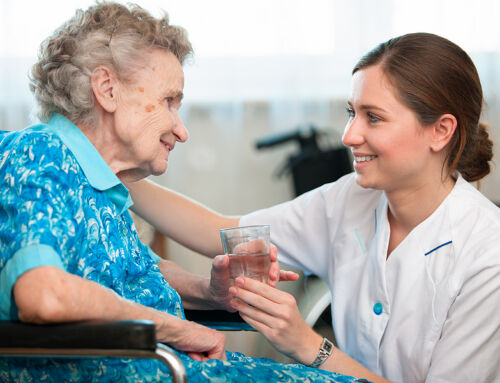If you have been looking at various senior living options, including continuing care retirement communities (CCRCs, also called life plan communities), you have likely heard or seen the term “continuum of care” used. It’s an important concept when it comes to the variety of services provided by retirement communities, but I find it is also a term that is unclear to many prospective residents. So, let’s dig in and answer the commonly asked question: What is a “continuum of care”?
First, the definition…
A “continuum of care” refers to the increasing intensity of healthcare services that a person may need as they age.
Envision a spectrum. On the left, the spectrum begins with independent living–a person who is more or less self-sufficient and able to safely live on their own. The spectrum then progresses to the right to include personal care, assisted living, and/or memory care–this includes people who need help with activities of daily living (ADLs) like dressing or bathing, and/or have memory issues as the result of age-related cognitive decline or conditions like dementia or Alzheimer’s disease; depending on the individual’s needs, it may or may not be safe for them to live alone. Then, on the far right-hand side of the spectrum would be skilled care and skilled nursing care–for people who have major health issues or cognitive decline and are no longer able to care for themselves.
A closer look at the phases of the care continuum
Independent living
Independent living is an option for seniors who are able to perform ADLs with little to no assistance and who do not require on-going medical support. They may, however, need occasional assistance with “instrumental activities of daily living” (IADLs), which include things like housekeeping or household maintenance. Thanks to ever-improving assistive technologies, combined with other support devices like walkers, wheelchairs, ramps, and rails, many seniors are able to remain in the independent living category for longer than in previous generations.
>> Related: Can Assistive Tech Reduce Your Senior Home Care Worries?
Personal care and assisted living
Assisted living (also called “custodial care” or “personal care”) is non-medical care services for people who require help with one or more of the six main ADLs: bathing, continence, dressing, eating, toileting, and/or transferring (walking). Medication management may also be needed. These services are often first provided in the senior’s own home, but as a higher level of help is required, moving to an assisted living facility may be more practical.
It’s important to note that assisted living is for non-medical care. While in most cases, assisted living recipients are not able to live fully independently, they do not need the type of around-the-clock medical care provided by a skilled nursing facility. But it’s worth noting that some assisted living providers are more equipped than others to serve residents with higher care needs–approaching what you might find in a skilled nursing facility, but stopping short of the type of medical care services that require a license.
>> Who Decides if a CCRC Resident Needs a Higher Level of Care?
Memory care
Memory care is an increasingly common component of both assisted living and skilled care as more and more seniors are diagnosed with dementia and Alzheimer’s disease; there are even dedicated memory care centers available in some areas. Typically, memory care is offered in a community setting with the level of care increasing as the illness progresses, often leading to 24-hour care.
Skilled care and skilled nursing care
Encompassing both healthcare and rehabilitative services, skilled care can include things like nursing, physical therapy, occupational therapy, and speech therapy. This type of patient management, observation, and/or evaluation is typically administered by licensed practical nurses (LPNs) and licensed vocational nurses (LVNs)–not usually by registered nurses (RNs).
A step up from basic skilled care is skilled nursing care, which is provided by registered nurses. These nurses give hands-on care in many cases–performing tasks such as administering IV drugs or giving shots.
Sometimes referred to as nursing homes, skilled healthcare centers employ LPNs, LVNs, and RNs. There are also licensed home healthcare providers who deliver these types of healthcare and rehabilitative care in seniors’ homes.
>> Related: How to Analyze the Quality of a CCRC Healthcare Center
Where retirement communities fall on the continuum
If you are considering a move to a retirement community, it’s important to understand exactly what you are getting for your money. Yes, you want to look at perks like amenities and location, but one of the most important factors that distinguishes one senior living community from another is which phase or phases along the continuum of care the community is able to serve.
Some retirement communities are focused on specific points along the continuum of care–perhaps it is an independent living community, or maybe it’s an assisted living residence. Others are equipped to offer services spanning the entire continuum. By definition, CCRCs fall into this latter category, providing their residents with a complete continuum of care–from independent living to skilled nursing care.
The progressive services offered by CCRCs allow residents to receive whatever level of care they need, whenever they need it. Services, amenities, and lifestyle are all important considerations, but for many CCRC residents, it is the availability of a continuum of care that is their community’s most valuable asset. Of course, this leads to other important considerations, such as the availability and quality of care services.
To learn more about CCRCs in your area, including information on their continuum of care-related services, contracts, and amenities, visit our online community search tool.

FREE Detailed Profile Reports on CCRCs/Life Plan Communities
Search Communities






